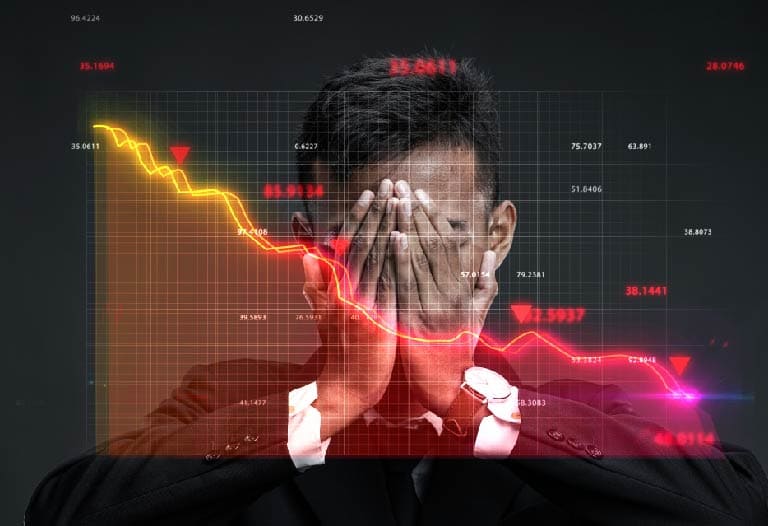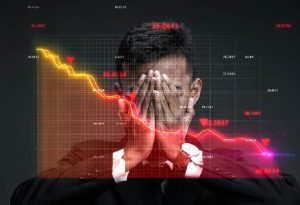
Table of Contents
ToggleIn the world of cryptocurrencies it is very common to be aware of the charts, that set of lines that show the ups and downs. One of the most interesting phenomena we can find in these charts is the Flash Crash. In this article we will tell you all about this term and how it works.
During the last few years, the market has changed significantly, changing important aspects of its operation. This is due to new trends such as high-frequency trading or the speculative tendency of new investors. Other factors such as the growth of investment funds, technological progress or market concentration are also involved, although these are just a few examples.
Due to the above examples, the market undergoes changes as time goes by. Some changes are even spontaneous. That is why today we will focus on talking about what a Flash Crash is. These events are becoming more and more common, however, many users still do not understand it.
How does a Flash Crash work?
A flash crash occurs when the price of an asset, in this case, a cryptocurrency, suddenly decreases in a very short period of time and then quickly recovers. Each investor sees it in a different way, that is. some investors see it as a solution, and others as a loss. In this process acts what we call volatility.
Volatility is a concept we see all the time, especially in the cryptocurrency market. This is because volatility directly influences cryptocurrency trading. However, sometimes this volatility translates into simple fluctuations in asset prices.
A flash crash, on the other hand, begins and ends before most investors can realize that the event has taken place. This is because it usually lasts only a few minutes or seconds.
When this event occurs, the affected assets usually recover most of their lost value immediately. They vary greatly depending on how long they last, but are generally considered an extreme of what we call a volatility burst. However, the large amount of money lost by investors and the causes that have led to these events suggest more than just a volatility burst.
Let’s look at it another way. A flash crash is a noticeable and momentary change in the price of an asset, but it does not necessarily mean a decline and increase in a price, it can be just the opposite. Prices can increase rapidly before falling back to their previous value. Most of the time it is the other way around, but we must keep this in mind.
We can also find this happening in trades between pairs, that is, if we have two currencies and the price of one currency plummets due to a flash crash it can result in the price of the other currency rising.
To better understand what causes a flash crash, the first thing to do is to know its causes. Below we will see the most common ones and explain how they originate.

Causes of a Flash Crash
There are many reasons that can lead to this happening in the market and the culprits can be people or even the computers themselves.
Human causes
Many times a flash crash is due to human error. Many of the crashes have had to do with some kind of accidental trading. For example, let’s imagine that we are an investor or a manager who is about to make a purchase and sale of cryptocurrencies. It may be the case that when establishing the amount we make a mistake and add a zero extra which would end up in an involuntary variation in the transaction that can affect the market price. This accident is much more common than we imagine and is called “fat finger error“. Not only can we make a mistake by putting one 0 extra, we can also mistakenly set the buy or sell price.
There are other human reasons that influence a flash crash. These are the deliberate attempts of many traders to manipulate the cryptocurrency market through fraudulent and illegal methods. An example of this is the method known as “spoofing” or “dynamic layering”.
This occurs when a user places large sell orders at a price completely different from the current market value and then cancels the order before the asset reaches the price stated in the order. Such an action results in the illusion that a large sell off is occurring and causes all other users to sell their cryptocurrencies for fear of a drop in prices.
All these sudden sales provoke a great imbalance between the sell and buy orders causing an amplification in the fall. Of course, the same user who caused the massive sale, has set another buy order for the same value sold at a much lower price than the one set by the market, but he never manages to sell while, by cheating, he manages to buy at a lower price the assets.
This mismatch, taken to the chart that would represent a flash crash, translates into the user buying at the bottom of the flash crash and then selling the asset at a considerably high price after the recovery. In this way, large profits are made in a matter of seconds.
Computer related cases
In recent years, the role of computers in trading has increased significantly and has therefore become one of the main causes of flash crashes. These causes repeatedly involve software failures. These faults can lead to data not being communicated correctly between exchanges, which can result in inaccurate prices being applied to the value of an asset.
Another cause is the increase in trading volume and, above all, in high frequency trading in recent years. To introduce a computer into the world of trading, it needs to be remarkably fast and based on pre programmed algorithms. These algorithmic programs prepare the computer to be able to sell or buy assets when the market varies, offering profits or avoiding losses.
Because of these computers, in the event of a price decline, sell orders are triggered which cause another decline and so on. However, these computers also influence the recovery from a flash crash as well as its fall. This is because in the event of a price decline, many computers are programmed to make massive purchases of assets, which causes prices to rise again and leads to the recovery from the flash crash.
It is worth noting that according to some observations, a flash crash usually occurs when there is low trading volume. This is because liquidity is low and the market becomes more susceptible to manipulation, that is, with a few high volume orders, prices can be affected.





